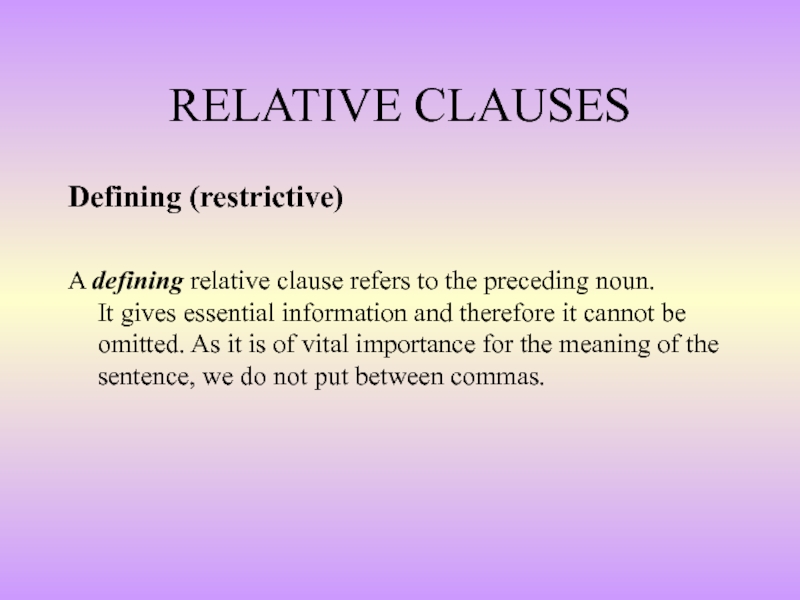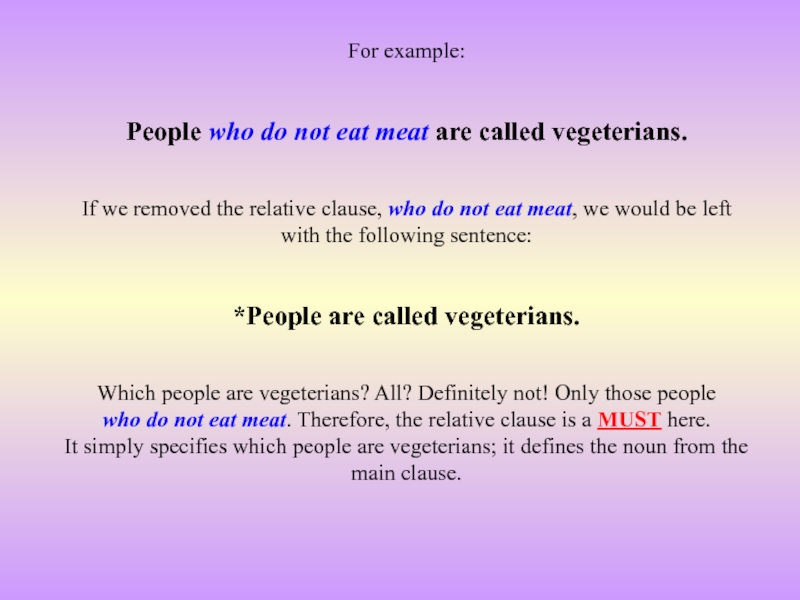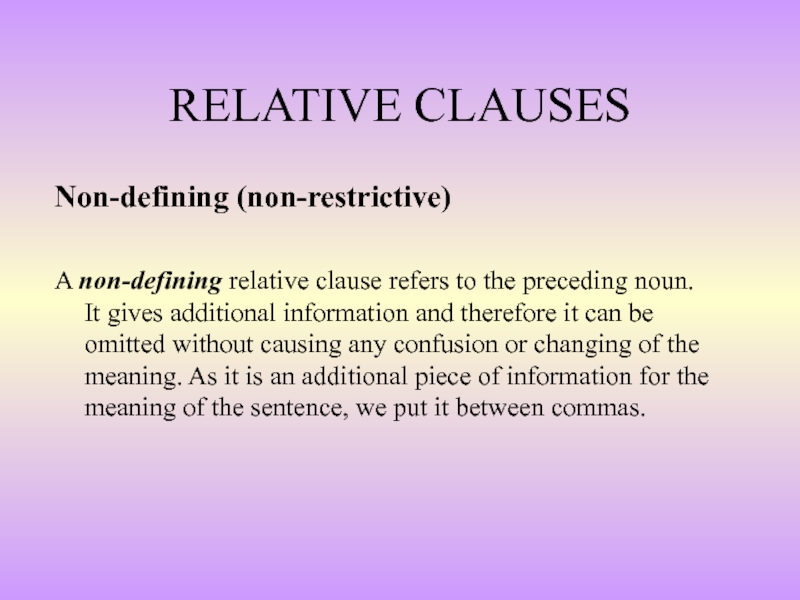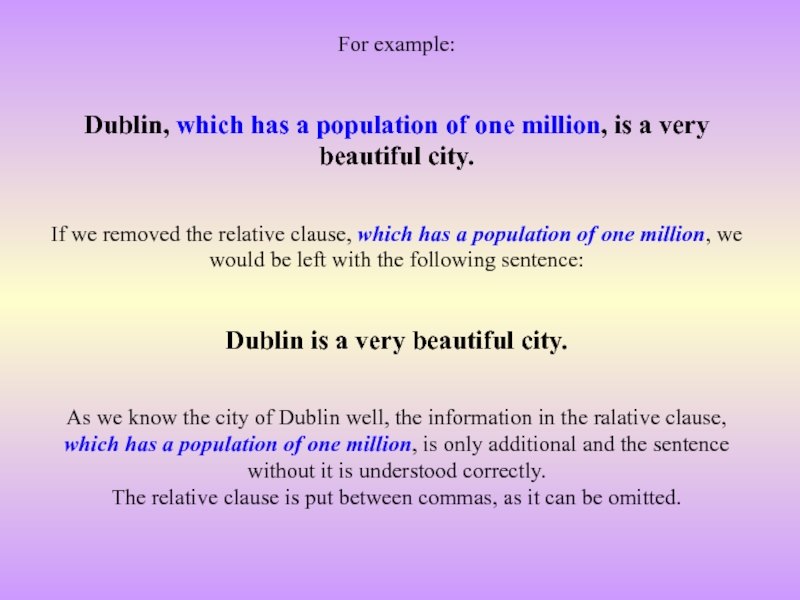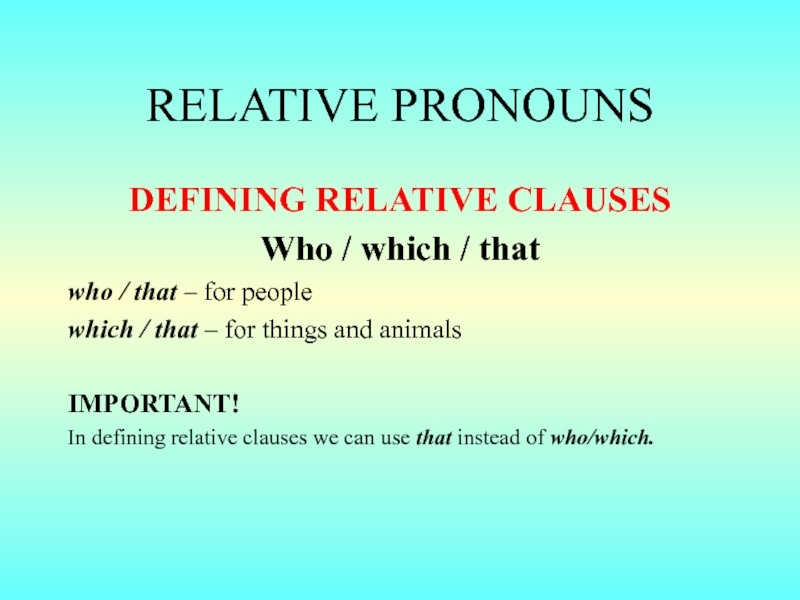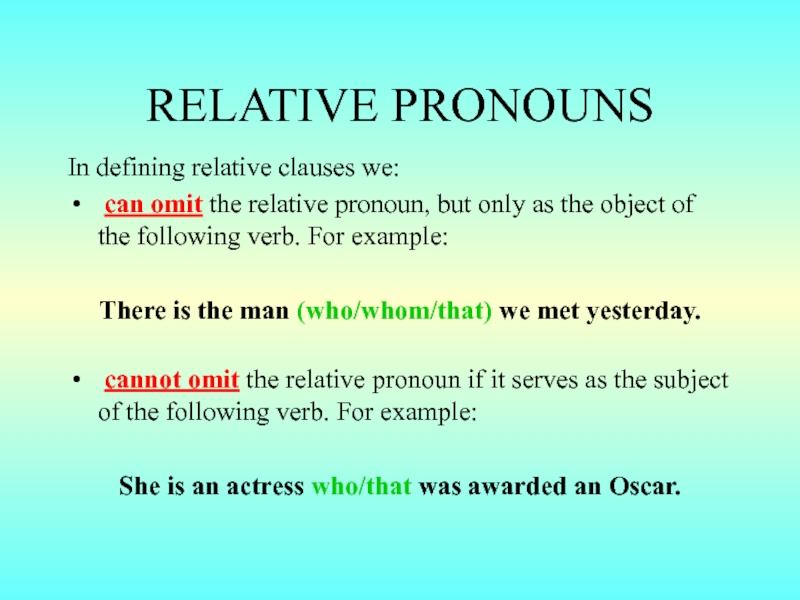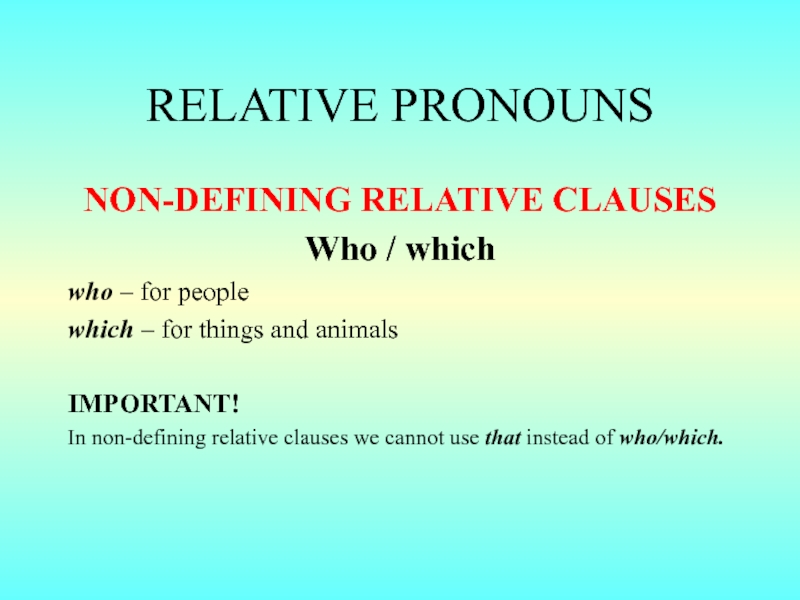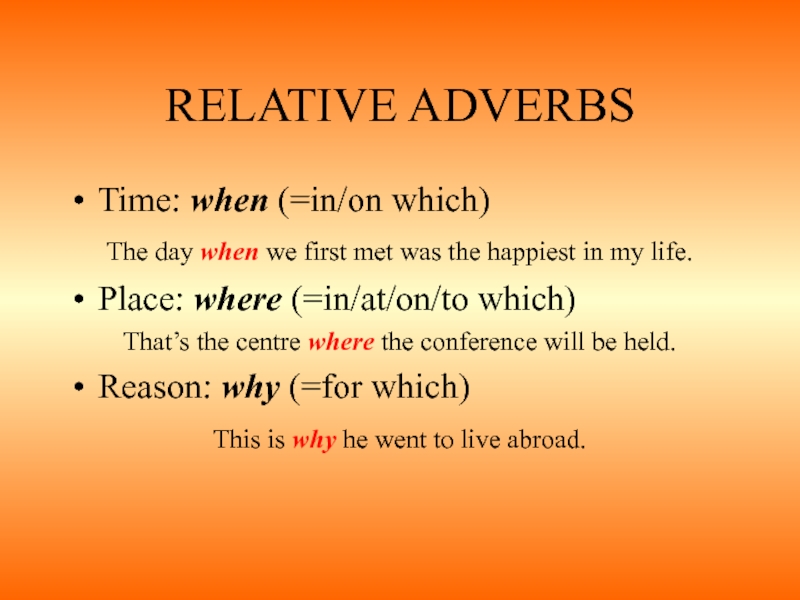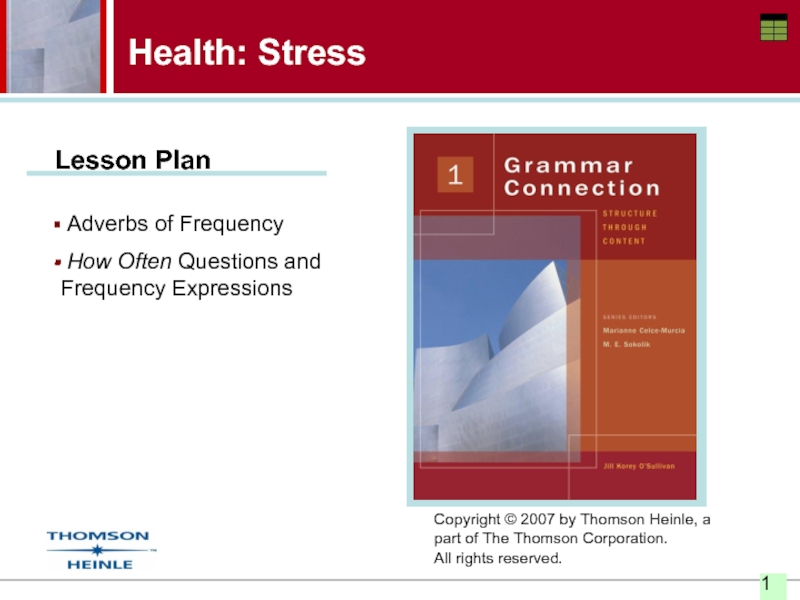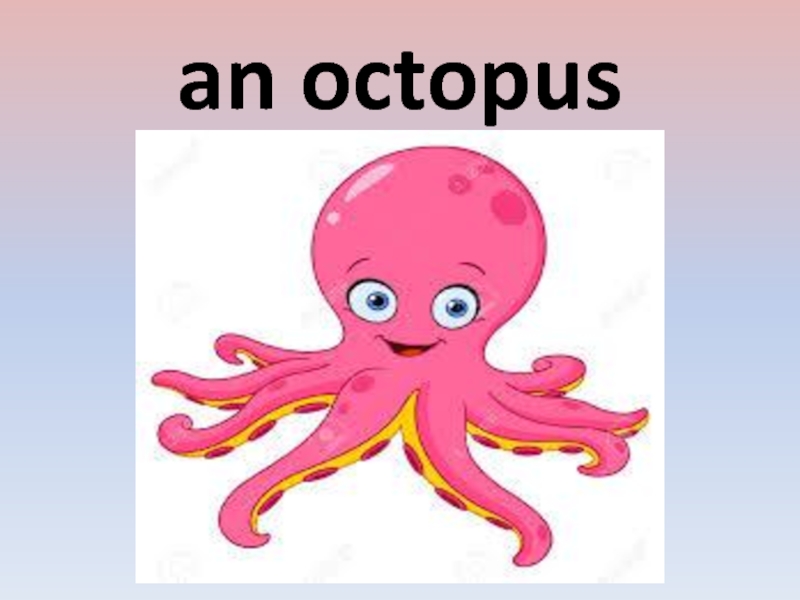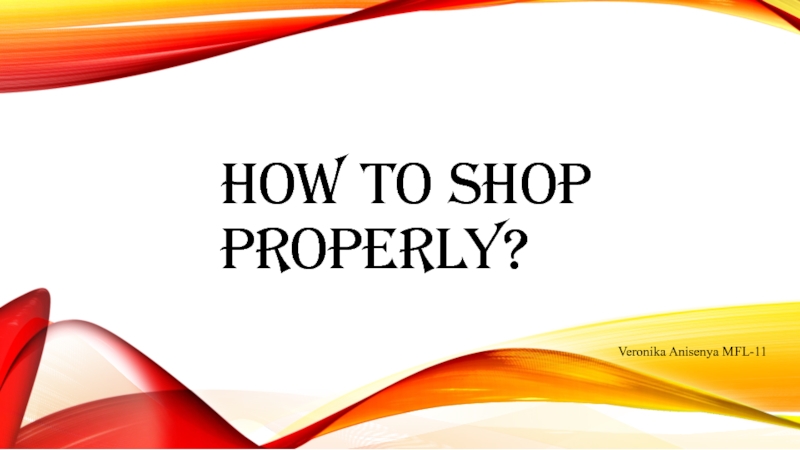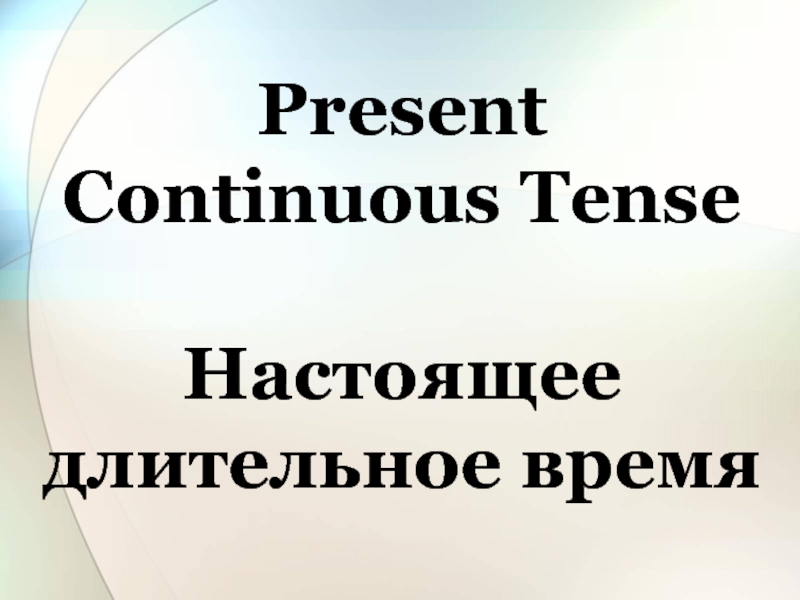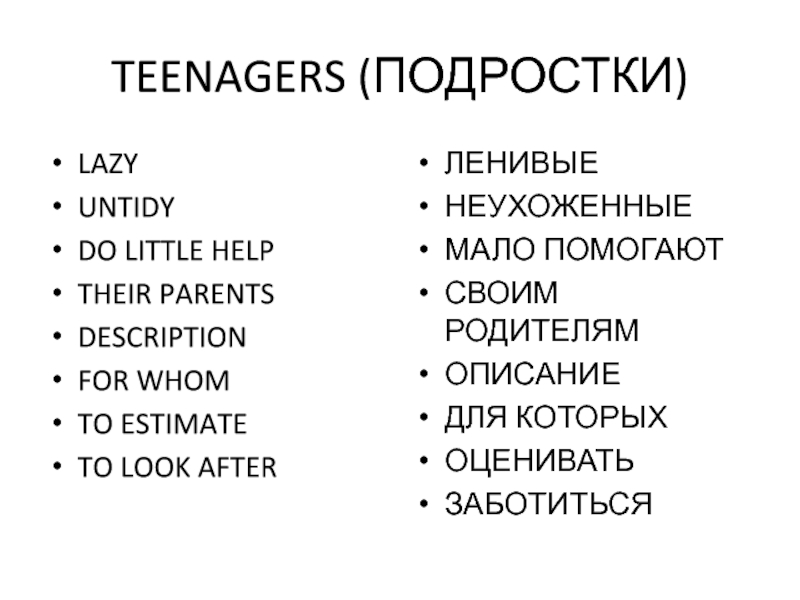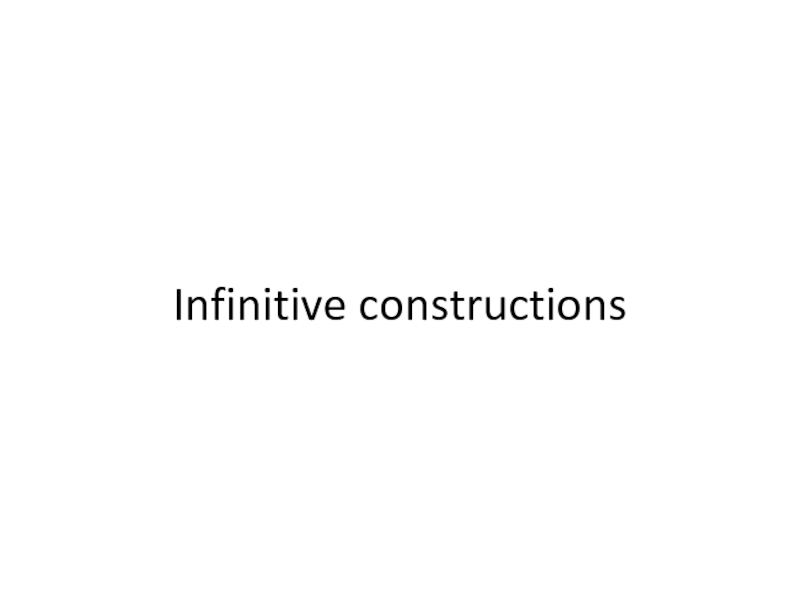It gives essential information and therefore it cannot be omitted. As it is of vital importance for the meaning of the sentence, we do not put between commas.
- Главная
- Разное
- Дизайн
- Бизнес и предпринимательство
- Аналитика
- Образование
- Развлечения
- Красота и здоровье
- Финансы
- Государство
- Путешествия
- Спорт
- Недвижимость
- Армия
- Графика
- Культурология
- Еда и кулинария
- Лингвистика
- Английский язык
- Астрономия
- Алгебра
- Биология
- География
- Детские презентации
- Информатика
- История
- Литература
- Маркетинг
- Математика
- Медицина
- Менеджмент
- Музыка
- МХК
- Немецкий язык
- ОБЖ
- Обществознание
- Окружающий мир
- Педагогика
- Русский язык
- Технология
- Физика
- Философия
- Химия
- Шаблоны, картинки для презентаций
- Экология
- Экономика
- Юриспруденция
Relative clauses презентация
Содержание
- 1. Relative clauses
- 2. For example: People who do not
- 3. RELATIVE CLAUSES Non-defining (non-restrictive) A non-defining
- 4. For example: Dublin, which has a
- 5. RELATIVE PRONOUNS DEFINING RELATIVE CLAUSES Who /
- 6. RELATIVE PRONOUNS In defining relative clauses we:
- 7. RELATIVE PRONOUNS NON-DEFINING RELATIVE CLAUSES Who /
- 8. RELATIVE ADVERBS Time: when (=in/on which) The
Слайд 1RELATIVE CLAUSES
Defining (restrictive)
A defining relative clause refers to the preceding noun.
Слайд 2For example:
People who do not eat meat are called vegeterians.
If we
removed the relative clause, who do not eat meat, we would be left with the following sentence:
*People are called vegeterians.
Which people are vegeterians? All? Definitely not! Only those people who do not eat meat. Therefore, the relative clause is a MUST here. It simply specifies which people are vegeterians; it defines the noun from the main clause.
*People are called vegeterians.
Which people are vegeterians? All? Definitely not! Only those people who do not eat meat. Therefore, the relative clause is a MUST here. It simply specifies which people are vegeterians; it defines the noun from the main clause.
Слайд 3RELATIVE CLAUSES
Non-defining (non-restrictive)
A non-defining relative clause refers to the preceding noun.
It gives additional information and therefore it can be omitted without causing any confusion or changing of the meaning. As it is an additional piece of information for the meaning of the sentence, we put it between commas.
Слайд 4For example:
Dublin, which has a population of one million, is a
very beautiful city.
If we removed the relative clause, which has a population of one million, we would be left with the following sentence:
Dublin is a very beautiful city.
As we know the city of Dublin well, the information in the ralative clause, which has a population of one million, is only additional and the sentence without it is understood correctly. The relative clause is put between commas, as it can be omitted.
If we removed the relative clause, which has a population of one million, we would be left with the following sentence:
Dublin is a very beautiful city.
As we know the city of Dublin well, the information in the ralative clause, which has a population of one million, is only additional and the sentence without it is understood correctly. The relative clause is put between commas, as it can be omitted.
Слайд 5RELATIVE PRONOUNS
DEFINING RELATIVE CLAUSES
Who / which / that
who / that –
for people
which / that – for things and animals
IMPORTANT!
In defining relative clauses we can use that instead of who/which.
which / that – for things and animals
IMPORTANT!
In defining relative clauses we can use that instead of who/which.
Слайд 6RELATIVE PRONOUNS
In defining relative clauses we:
can omit the relative pronoun,
but only as the object of the following verb. For example:
There is the man (who/whom/that) we met yesterday.
cannot omit the relative pronoun if it serves as the subject of the following verb. For example:
She is an actress who/that was awarded an Oscar.
There is the man (who/whom/that) we met yesterday.
cannot omit the relative pronoun if it serves as the subject of the following verb. For example:
She is an actress who/that was awarded an Oscar.
Слайд 7RELATIVE PRONOUNS
NON-DEFINING RELATIVE CLAUSES
Who / which
who – for people
which – for
things and animals
IMPORTANT!
In non-defining relative clauses we cannot use that instead of who/which.
IMPORTANT!
In non-defining relative clauses we cannot use that instead of who/which.
Слайд 8RELATIVE ADVERBS
Time: when (=in/on which)
The day when we first met was
the happiest in my life.
Place: where (=in/at/on/to which)
That’s the centre where the conference will be held.
Reason: why (=for which)
This is why he went to live abroad.
Place: where (=in/at/on/to which)
That’s the centre where the conference will be held.
Reason: why (=for which)
This is why he went to live abroad.
